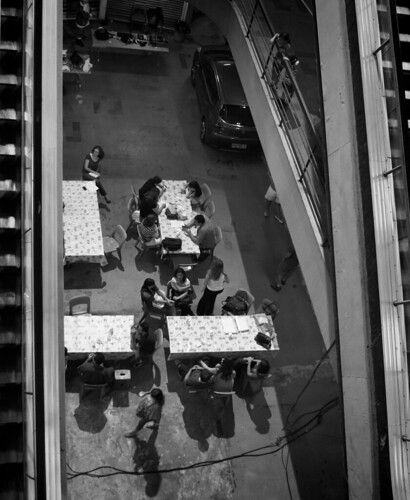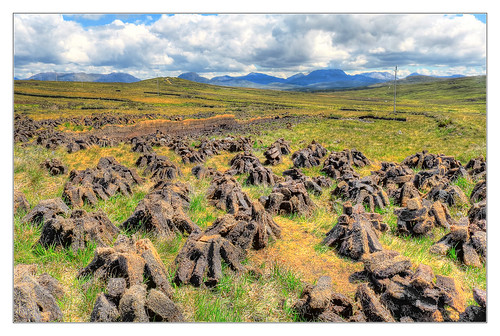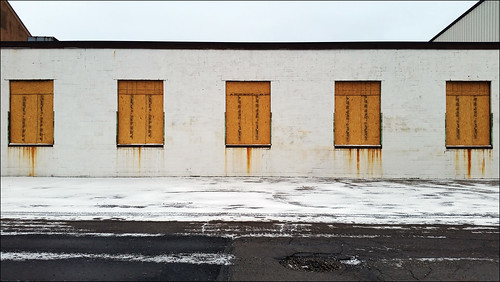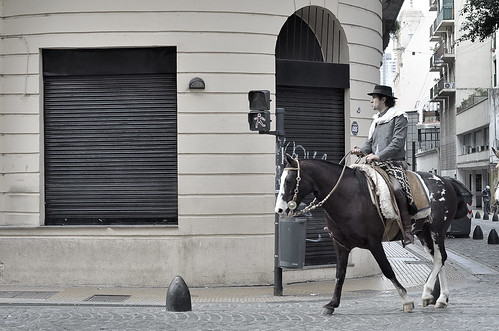Film Set
Film Set

Image by Carlos Ebert
São Paulo, Brazil.
Film Set

Image by Carlos Ebert
São Paulo, Brazil.
Connemara IR – Sionnanach peat or turf

Image by Daniel Mennerich
Peat, also known as turf, is an accumulation of partially decayed vegetation or organic matter. It is unique to natural areas called peatlands, bogs, mires, moors, or muskegs.
The peatland ecosystem is the most efficient carbon sink on the planet, because peatland plants capture CO2 naturally released from the peat, maintaining an equilibrium. In natural peatlands, the "annual rate of biomass production is greater than the rate of decomposition", but it takes "thousands of years for peatlands to develop the deposits of 1.5 to 2.3 m [4.9 to 7.5 ft], which is the average depth of the boreal [northern] peatlands".
Sphagnum moss, also called peat moss, is one of the most common components in peat, although many other plants can contribute. The biological features of Sphagnum mosses act to create a habitat aiding peat formation, a phenomenon termed ‘habitat manipulation’. Soils consisting primarily of peat are known as histosols. Peat forms in wetland conditions, where flooding or stagnant water obstructs the flow of oxygen from the atmosphere, slowing the rate of decomposition.
Peatlands, particularly bogs, are the primary source of peat, although less-common wetlands including fens, pocosins, and peat swamp forests also deposit peat. Landscapes covered in peat are home to specific kinds of plants including Sphagnum moss, ericaceous shrubs, and sedges (see bog for more information on this aspect of peat). Because organic matter accumulates over thousands of years, peat deposits provide records of past vegetation and climate by preserving plant remains, such as pollen. This allows the reconstruction of past environments and study changes in land use.
Peat is harvested as an important source of fuel in certain parts of the world. By volume, there are about 4 trillion cubic metres (5.2 trillion cubic yards) of peat in the world, covering a total of around 2% of the global land area (about 3 million square kilometres or 1.2 million square miles), containing about 8 billion terajoules of energy. Over time, the formation of peat is often the first step in the geological formation of other fossil fuels such as coal, particularly low-grade coal such as lignite.
Depending on the agency, peat is not generally regarded as a renewable source of energy, due to its extraction rate in industrialized countries far exceeding its slow regrowth rate of 1 mm per year, and as it is also reported that peat regrowth takes place only in 30-40% of peatlands. Because of this, the UNFCCC, and another organization affiliated with the United Nations classified peat as a fossil fuel.
However, the Intergovernmental Panel on Climate Change (IPCC) has begun to classify peat as a "slowly renewable" fuel. This is also the classification used by many in the peat industry. At 106 g CO2/MJ, the carbon dioxide emission intensity of peat is higher than that of coal (at 94.6 g CO2/MJ) and natural gas (at 56.1) (IPCC).
The Birth of Venus by Botticelli, le Galleria degli Uffizi, Florence, Italy.

Image by ER’s Eyes – Our planet is beautiful.
Sala del Botticelli
Salas 10-14
1485 c., Alessandro Filipepi, known as Sandro Botticelli.
The Birth of Venus or Nascita di Venere is a painting by Sandro Botticelli. It depicts the goddess Venus, having emerged from the sea as a full grown woman, arriving at the sea-shore (which is related to the Venus Anadyomene motif). The painting is held in the Uffizi Gallery in Florence.
Tradition associates the image of Venus in Botticelli’s painting with the lovely Simonetta Cattaneo Vespucci, with whom it is suspected both Lorenzo and his younger brother, Giuliano, were much enamored. Simonetta was, not coincidentally, born in the Tuscan seaside town of Portovenere (the port of Venus). In the case of Botticelli’s Birth of Venus, the suggested references to Lorenzo, supported by other internal indicators such as the stand of laurel bushes at the right, would have been just the sort of thing erudite Florentine humanists would have appreciated.
These essentially pagan readings of Botticelli’s Birth of Venus should not exclude a more purely Christian one, which may be derived from the Neoplatonic reading of the painting indicated above. Viewed from a religious standpoint, the nudity of Venus suggests that of Eve before the Fall as well as the pure love of Paradise. Once landed, the goddess of love will don the earthly garb of mortal sin, an act that will lead to the New Eve – the Madonna whose purity is represented by the nude Venus. Once draped in earthly garments she becomes a personification of the Christian Church which offers a spiritual transport back to the pure love of eternal salvation. In this case the scallop shell upon which this image of Venus/Eve/Madonna/Church stands may be seen in its traditionally symbolic pilgrimage context. Furthermore, the broad expanse of sea serves as a reminder of the Virgin Marys’ title stella maris, allluding both to the Madonna’s name (Maria/maris) and to the heavenly body (Venus/stella). The sea brings forth Venus just as the Virgin gives birth to the ultimate symbol of love, Christ.
Rather than choosing one of the many interpretations offered for Botticelli’s depiction of the Birth (Arrival?) of Venus it might be better to view it from a variety of perspectives. This layered approach — mythological, political, religious–was intended.
***
Botticelli’s art was never fully committed to naturalism; in comparison to his contemporary Domenico Ghirlandaio, Botticelli seldom gave weight and volume to his figures and rarely used a deep perspectival space. In the Birth of Venus, Venus’ body is anatomically improbable, with elongated neck and torso. Her pose is impossible: although she stands in a classical contrapposto stance, her weight is shifted too far over the left leg for the pose to be held. Moreover, were she actually to stand on the edge of the shell (which cannot be identified as real), it would certainly tip over. The bodies and poses of the winds to the left are even harder to figure out. The background is summary, and the figures cast no shadows. It is clear that this is a fantasy image.
Venus is an Italian Renaissance ideal: blonde, pale-skinned, voluptuous. Botticelli has picked out highlights in her hair with gold leaf and has emphasized the femininity of her body (long neck, curviness). The brilliant light and soothing colors, the luxurious garden, the gorgeous draperies of the nymph, and the roses floating around the beautiful nude all suggest that the painting is meant to bring pleasure to the viewer.
***
The scene was inspired by the text in an Homeric hymn published in Florence in 1488 by the Greek refugee Demetrios Chalcondyles:
"Of august gold-wreathed and beautiful
Aphrodite I shall sing to whose domain
belong the battlements of all sea-loved
Cyprus where, blown by the moist breath
of Zephyros, she was carried over the
waves of the resounding sea on soft foam.
The gold-filleted Horae happily welcomed
her and clothed her with heavenly raiment."
Loading Dock, Lawrenceville, January 29, 2016

Image by real00
An image of relative orderliness, uselessness, and streaks of rust.
Buenos Aires

Image by Santiago Sito
learnbonds.com/news/argentina-pushes-65bn-bond-talk-deadl…
 Cinderella Solution Diet Review 2020 – Will It Really Work for You?
Cinderella Solution Diet Review 2020 – Will It Really Work for You? EZ Battery Reconditioning Review – Ridiculously Powerful Technique to Revive Dead Batteries?
EZ Battery Reconditioning Review – Ridiculously Powerful Technique to Revive Dead Batteries? Resurge Supplement Review 2020 – Does This Dinner Ritual Actually Work?
Resurge Supplement Review 2020 – Does This Dinner Ritual Actually Work? Text Chemistry Review (2020) – Does It Make You Irresistible to Men?
Text Chemistry Review (2020) – Does It Make You Irresistible to Men? 8 Week Keto Custom Plan Review – Does It Really Work?
8 Week Keto Custom Plan Review – Does It Really Work?